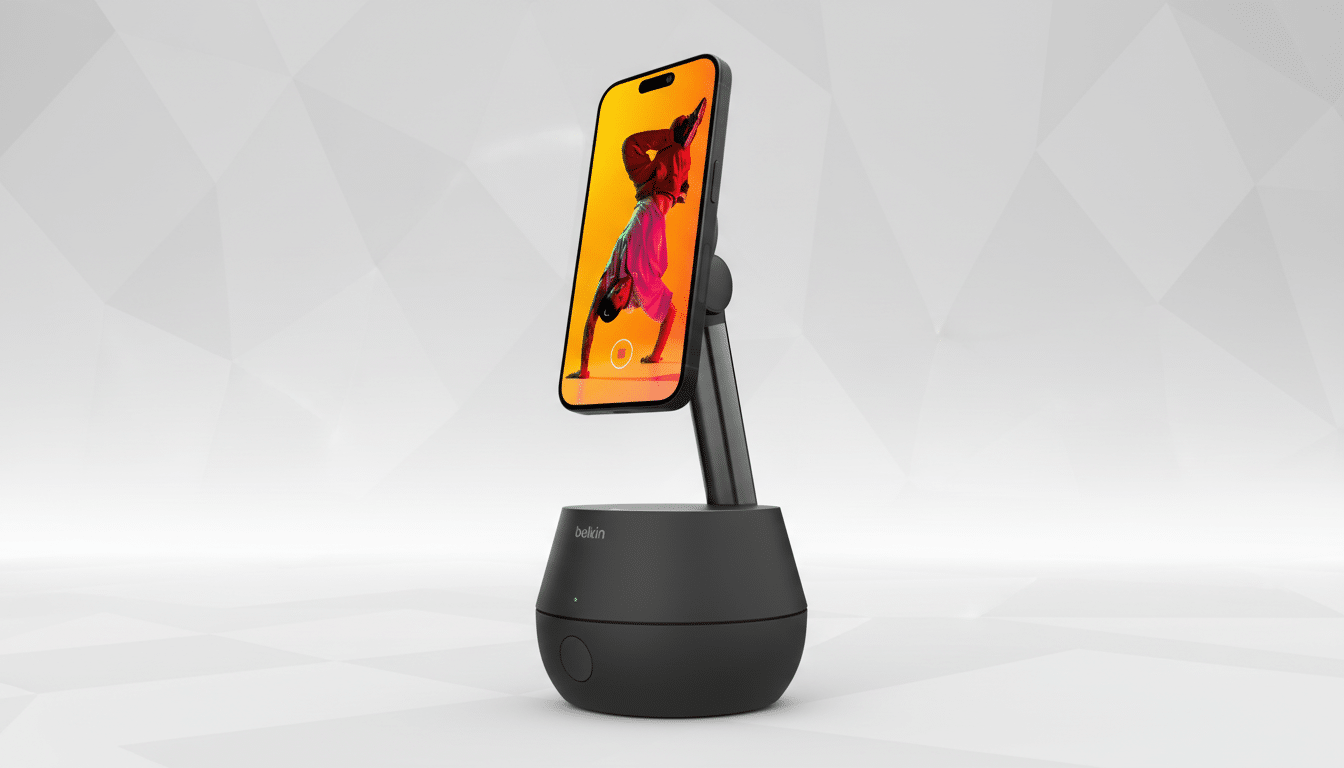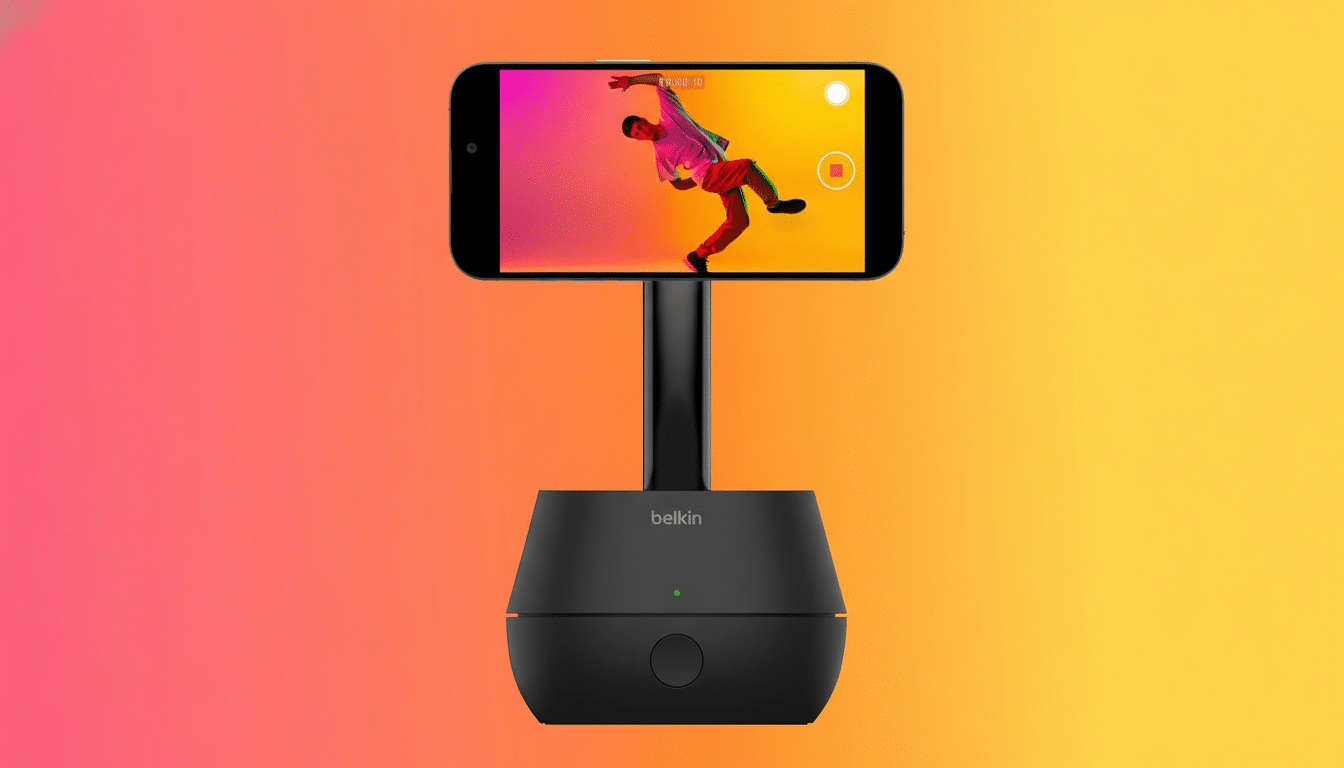Belkin is recalling the Auto-Tracking Stand Pro as well as two 20,000 mAh portable batteries because they have been overheating and may pose a fire hazard due to defective lithium-ion cells.
A notice filed with the US Consumer Product Safety Commission cites one such fire-related incident in the US and 15 internationally, including two instances of minor burn injuries and property damage totaling $37,765 outside the US.
- What’s being recalled: Stand Pro and two 20,000 mAh power banks
- The safety risk and how overheating incidents occur
- What Belkin is offering customers in the recall program
- How to check eligibility and what to do if yours is recalled
- The wider context and recent history of battery recalls
- How to submit a recall claim and what information to have

What’s being recalled: Stand Pro and two 20,000 mAh power banks
The recall includes three items: the Auto-Tracking Stand Pro (model MMA008), the Belkin BoostCharge USB-C PD Power Bank 20K (model BPB002), and the Playa USB-C PD Power Bank 20K (model PB0003). The stand adds a MagSafe mount, NFC pairing, and its base is motorized to rotate up to 360 degrees with as much as 90 degrees of tilt — which can be great for creators and video calls. The two power banks provide high-capacity USB-C Power Delivery charging for phones, tablets, and other gadgets.
The safety risk and how overheating incidents occur
Belkin says the danger comes from a manufacturing defect leading to potential overheating in lithium-ion cell components. In reality, things like tiny contaminants, misaligned separators, or insufficient cell protection can cause internal short circuits and thermal runaway — a situation in which the battery heats up quickly and possibly becomes smoky, begins to vent, or even catches fire. Even a small number of failures is enough to justify expeditious action, as lithium-ion situations can become rapidly worse and even re-ignite after they seem to be extinguished, advice from fire safety experts and the CPSC suggests.
Today’s power banks generally feature multiple safety protections, including overcharge protection, temperature control, and current limiting, and are tested according to standards such as UL 2056 and UN 38.3 for transport. But no certification can entirely eliminate the possibility that rare cell-level defects will slip into the field, and that is why regulators have been calling for early reporting and recall when any pattern emerges.
What Belkin is offering customers in the recall program
Belkin is offering a full refund or store credit based on the purchase value, plus an additional 20%, to affected customers through its website. Consumers submitting a claim will need to provide proof of purchase or the product’s serial number. The company recommends that consumers cease use of the products immediately, unplug them from any outlet, and place them in a safe, dry location away from any flammable materials.
How to check eligibility and what to do if yours is recalled
Look for the model number on the back or side of your machine. Products are included in the recall only if the model number matches MMA008, BPB002, or PB0003. Recalled products should not be put in household trash or recycling bins. Instead, comply with Belkin’s recall instructions or check local e-waste guidelines. If you have to carry the item to a drop-off site, don’t puncture or crush it, and place it into a nonconductive container.

- Do not charge batteries under pillows or on a bed.
- Keep batteries away from heat sources.
- Use the supplied or certified cables.
- Seek help when necessary; discontinue use if you see swelling, hear unusual sounds, feel excessive heat, or notice any damage.
Small measures such as these can greatly lower risk, especially when you consider large-capacity packs.
The wider context and recent history of battery recalls
This isn’t the first time Belkin has taken a power accessory off the market over battery worries — a previous model, which had been both power bank and charger combo, was recalled due to overheating. Other prominent brands have faced similar actions, highlighting how touchy lithium-ion manufacturing is — and how hard the CPSC and market surveillance authorities around the world come down on corrective action when safety signals are flagged.
Independent fire safety groups add that while the actual rate of failures is low in comparison to the millions of devices, the impact from any single incident could be significant. It’s that disparity that is why open reporting, fast recalls, and consumer education remain the bedrock of lithium-ion safety policy.
How to submit a recall claim and what information to have
Consumers can initiate a claim through Belkin’s recall website or on the CPSC recall page for more information. Be prepared with the serial number, proof of purchase, and photos if you are asked for any. People who receive the recall announcement will either get a prepaid return kit or be instructed to follow verified e-waste disposal procedures as a condition before returning any recalled product to receive a refund or credit. If you have more than one affected device, request service for each one.
If your accessories aren’t listed as part of the recall but they exhibit damage or feel hotter than normal during use, stop using them and contact the manufacturer or a local electronics recycler. Never assume with any lithium-ion product — safety first is the rule.

